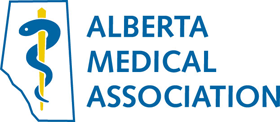Mid-year update: A Healthy AMA
Achieving the goals under the three Key Results Areas requires a healthy, vibrant and sustainable AMA. For the coming year, we will focus on the following core organizational capabilities:
Governance
|
|
- Implement the governance process improvement activities identified by the Board:
- Social media policy development.
- A review of the AMA Vision once an agreement is in place and mandates are clarified.
- Improvements to onboarding and orientation processes for Board and RF.
- Enhance supports for sections (e.g., governance training, conflict resolution, etc.).
- Enhance supports for regional RF Delegates (e.g., support two-way engagement between Delegates and members).
- Implement the Board Working Group on Nominating Committee recommendations to advance EDI principles:
Increase EDI literacy and language skills for Committee members.
Review committee position descriptions for EDI best-practice language.
Implement a two-year pilot of an aspirational quota.
|
- The Board has approved a social media policy to guide activity.
- The Board has begun a strategic review that will focus initially on a review of mission, key result areas and goals to support development of the 2023-24 business plan.
- The Governance Oversight Group will be leading a process with sections to review the current governance practices in place and identify where additional supports may be needed. The survey to section leaders is expected to be disseminated in May.
- The equity, diversity and inclusion training provided to the Nominating Committee is now mandatory for all hiring committees.
- The aspirational quota pilot is in place and outreach to underrepresented groups is occurring as needed to reach the aspirational goal of 50%.
|
Workforce
|
|
- Optimize workforce in the hybrid work environment and develop measures to ensure member value generation remains high in the new environment.
- Optimize AMA workforce under a new agreement (e.g., supporting growth in ARP’s, future arbitrations, etc.)
- Complete a review the AMA’s employee benefits program.
|
- A hybrid working group has been created and is reviewing the effectiveness of the hybrid environment that was launched in May 2022.
- Work optimization under the new agreement, and the hybrid environment is ongoing, with staff shifting and retraining as needed.
- Mercers has been engaged to undertake the employee benefits review with the results to be available in summer to support the business planning process.
|
Financial
|
|
- Judicious use of AMA contingency to support essential deliverables and sustain the organization.
- Through the Committee on Financial Audit, review the AMA’s investment beliefs and principles.
- Effective stewardship of program funding.
|
- The steps taken to ensure organizational stability following the termination of the AMA Agreement, have ensured we remain in a strong financial position, providing the flexibility to invest in the new activities outlined and new opportunities identified during the upcoming strategic planning process.
- The COFA complete the review of the AMA’s investment beliefs and principles and is now considering the asset mix for the various portfolios (e.g., contingency and insurance reserves).
- We are working with government to finalize all the program grant agreements required under the AMA Agreement and will then complete the required financial reporting.
|
Relationships
|
|
- Optimize our relationship with the CMA under evolving governance structures and leverage available affinity funding programs and other CMA supports.
- Improve connections with other health professions to enable creative development of team-based care.
|
- We continue to work closely with the CMA on matters of common interest, including federal health transfers.
- Efforts have been made to engage with other health professions to begin building the necessary relationships to support team-based care.
|
Knowledge
|
|
- Improve our understanding of members through surveys, focused research and engagement.
- Modernize the AMA website content and structure to improve member experience.
- Continue redevelopment of our member information system.
|
- The member tracker survey was relaunched in January 2023, which will provide important insight into the interests, concerns and sentiment of members.
- The redevelopment of the AMA website is underway and includes steps to engage members for ideas and feedback. The launch is anticipated in 2024.
- We are roughly halfway through the multi-year project to redevelop the aging AMA member information systems. Funding was secured as part of the AMA Agreement to redevelop the government funded programs as well, to ensure a common platform for all AMA systems.
|
